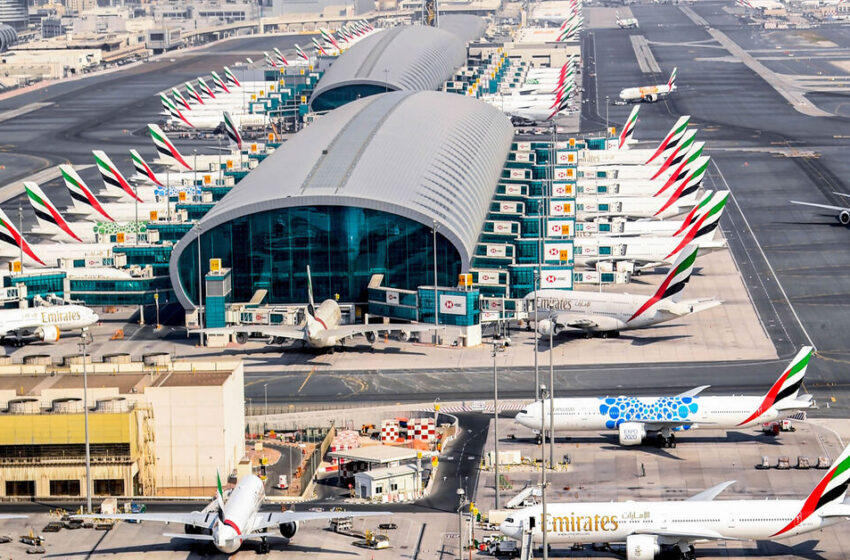
Tag Archives: 2019


Medical tourism in India grows 33% in 2023, says ICRA
Medical tourism in India increased by around 33% year-on-year in 2023, with expectations to surpass the pre-pandemic levels of 700,000 visitors recorded in 2019 in calendar year 2024, credit rating agency ICRA said.
This growth, the agency said, is attributed to the central government’s initiative to extend e-medical visa facilities to nationals of 167 countries, which is likely to further boost medical tourism footfalls.
The rise in medical tourism is supported by India’s competitive treatment costs, quality medical facilities, and relatively short waiting times for procedures. This trend is expected to continue, offering a positive outlook for the Indian hospital industry, said ICRA.
The agency projected that aggregate occupancy for its sample set of hospital companies will remain stable at 61-63% in FY25, down slightly from 64.7% in FY24. This stability is attributed to the ongoing demand for healthcare services and continued market share gains for organised players, it said.
The average revenue per occupied bed (ARPOB) is expected to grow by 4-6% in FY25, following an 11% increase in FY24. This growth is due to an improved specialty mix, a better payor mix focussing on cash and insurance patients, and annual price adjustments to address cost inflation.
ICRA estimates a revenue growth of 12-14% for its sample set companies in FY25. Enhanced operating leverage, cost optimisation, and digitisation measures are likely to sustain an operating profit margin (OPM) of around 22-23%, compared to 23.1% in FY24. Despite the need for additional debt to fund significant bed capacity expansions in FY25 and FY26, ICRA maintained a stable outlook on the Indian hospital industry.
The increasing incidence of non-communicable lifestyle diseases, higher per capita healthcare spending, greater health insurance coverage, and growing medical tourism volumes are expected to support the industry’s growth prospects, it said.
“We expect our sample set companies to add over 4,000 beds in FY25 and another 3,400 beds in FY26. This represents approximately 23% of the existing capacity as of 31 March 2024. While this expansion will involve some debt funding, the debt metrics are expected to remain strong,” Mythri Macherla, Vice President & Sector Head – Corporate Ratings at ICRA, said.
In-patient footfalls for FY24 were steady, supported by a recovery in medical tourism and a shift towards larger hospitals with increased insurance coverage. Technological advancements have kept the average length of stay (ALOS) at 3.4 days, promoting quicker patient turnover, it said

Surpassing 2019 levels, business travel spend to reach USD 1.48tn by year end: GBTA
According to the latest GBTA Business Travel Index Report, because of economic stability, pent-up demand and recovery momentum spending in the business travel industry is projected to surpass USD 2 trillion by 2028.
Meanwhile, the forecast by the Global Business Travel Association (GBTA), a business travel and meetings trade organisation, for 2024 predicts global business travel spending will reach USD 1.48 trillion USD by the end of the year, an increase on 2019 spending which was a previous record at USD 1.43 trillion.
“We are witnessing the expected rebound in the sector, reflecting the resilience and adaptability of businesses and the value of business travel worldwide,” said Suzanne Neufang, CEO, GBTA. “With projected spending expected to continue to increase through 2028, the future of business travel looks promising. However, we must remain vigilant and adaptive to potential headwinds in this period of stabilisation, as factors such as changing economic conditions, technological advancements and sustainability developments will also shape the sector ahead.”
GBTA shared that global business travel spending is anticipated to increase 11.1% in 2024. Growth is expected to continue to gradually moderate, resulting in an annual compound growth rate of 6.95% from 2025 to 2028.
According to GBTA, in 2023, the business travel industry had recovered approximately $675 billion of the USD 770 billion lost in 2020, according to GBTA BTI analysis, achieving 93% of the pre-pandemic peak of USD 1.43 trillion by the end of 2023. The sector experienced a significant resurgence in 2023, with spending growing by 30% compared to 2022, reaching USD 1.3 trillion.
The estimated breakdown of the USD 1.34 trillion in 2023 business travel expenditures includes USD 501 billion for lodging, USD 282 billion for air travel, USD 245 billion for food and beverage, USD 165 billion for ground transportation and USD 142 billion for other travel expenses.
Meanwhile, recovery in business travel continues to vary by region.
GBTA revealed that Asia Pacific emerged as the fastest-growing region in 2023 (36%), followed by Western Europe (33%) and North America (25%). The recovery bounce back was led in 2023 by the U.S, Middle East and Africa, and Latin America, all achieving 100% or more of 2019 spending numbers. For 2024, China and the U.S. are forecast to continue to lead as the top two markets, respectively, for overall business travel spending.
Business travel spending also continues to differ across industries.
GBTA’s report states that the financial and insurance activities sector is projected to experience the most significant expansion (72%) in business travel spending through 2028. Conversely, the retail trade (41%) and agriculture, forestry and fishing (32%) sectors are anticipated to see the least growth during this period.
With an optimistic outlook overall, there are factors that could impact business travel’s longer-term forecast, such as persistent inflation, China’s slower recovery, geopolitical tensions, industry workforce challenges and incidence of natural disasters. Increased focus on corporate sustainability also has the potential to impact the sector, demonstrating the vital importance of coordinated action across the industry for business travel’s future.
GBTA’s data also points out that potential upside impacts for the business travel sector include ongoing economic stability, technological advancements, particularly in artificial intelligence (AI), and stronger-than-expected economic growth in key markets like the U.S. and India.
GBTA’s survey of 4,100 business travellers across 28 countries and four regions (North America, Europe, Asia Pacific, and Latin America), revealed an increase in overall business travel, with international travel remaining below average. 64% of business travellers globally report increased spending on business travel compared to 2023. However, over one-third (37%) say they have experienced more restrictive travel policies since pre-COVID.
GBTA highlights that business travellers globally estimate their own spending, on average, amounts to USD 834 per person based on their last business trip. Lodging accounts for USD 312, on average, and food and beverage is USD 153. Air travel averages USD 176 while ground transportation (USD 103) and miscellaneous expenses (USD 89) round out the total.A majority of survey respondents (81%) reported that their most recent business trip was very (46%) or moderately (35%) worthwhile in achieving their business objectives. When asked about their most recent business trip, the most common purpose of travel among all global business travellers is attending seminars/training followed by conventions/conferences.
Compared to 2019, 76% of business travellers travelled the same or more for business travel. Those traveling more (28%) outpaced those who travel less (20%) over the same period. Although overall business travel has increased, both international and group travel remain, on average, lower than 2019 levels. Two-fifths (40%) of the trips taken are three-to-five-night stays, while two-night stays account for one-third (32%). Additionally, 58% said they extended work trips for leisure or vacation about the same (41%) or more frequently (17%) than previous.
When asked about their greatest priorities while traveling for work, maximising comfort (43%) and minimising cost (41%) are on the same level globally, with 16% saying reducing carbon emissions. Additionally, European travellers (22%) are more likely to prioritise reducing their carbon footprint compared to other regions.
GBTA’s data revealed that when it comes to payment methods for business travel, nearly two-thirds (61%) of global business travellers across all regions are given a corporate credit card. Credit card utilisation is significantly higher among North American business travellers, as nearly a third put 100% of their trip expenses on their corporate card.
Additionally, three in five (59%) business travellers surveyed have uploaded their corporate credit card to a mobile wallet and approximately 87% report they use their mobile wallet for at least 10% of their business travel transactions.

Japan’s tourism rebounds: 2.69mn visitors in January, on track for record year
Japan has started the year on a promising note for its tourism sector, with over 2 million visitors gracing its shores in January, marking the eighth consecutive month of such numbers.
According to data from the Japan National Tourism Organization (JNTO), the 2.69 million foreign visitors for business and leisure last month nearly matched December’s figure of 2.73 million, which had set an all-time high for that month.
This sustained momentum comes on the heels of a remarkable pandemic recovery year in 2023, where over 25 million visitors entered the country, surpassing previous expectations.
The Covid-19 pandemic had severely impacted Japan’s tourism for over two years, but the country experienced a surge in visitors in 2023, aided by the yen’s rapid depreciation, making Japan an attractive and economical destination.
In January, despite a minor dip from December, arrivals remained on par with 2019 figures, when Japan had recorded a record-breaking 39.9 million tourists. The month’s statistics were influenced by the major earthquake in Ishikawa on January 1. However, tourists from South Korea, Taiwan, and Australia achieved an all-time high for any single month.
While tourism from China remains below pre-pandemic levels, with mainland Chinese visitors once constituting a significant portion, there are positive signs of recovery. Chinese visitors numbered 415,900 in January, representing a notable 33% increase from the previous month. Additionally, Japanese department stores reported robust sales of luxury goods and duty-free items in the first half of February, partly attributed to Lunar New Year celebrations.
Analysts suggest a shift in Chinese travel trends, with a preference for more leisurely trips, termed “chill stay,” in contrast to the frenetic shopping sprees witnessed in previous years. The uptick in visitor numbers and spending bodes well for Japan’s economy, where inbound tourism plays an increasingly vital role. Last year, visitors surpassed the JYP 5 trillion-mark, exceeding the government’s set target, reinforcing the economic significance of tourism to Japan.

Dubai Airport records 31.7% surge in passengers for 2023; India tops the list with 11.9mn arrivals
India has emerged at the top spot for the highest number of passengers flying through the Dubai International Airport (DXB), the world’s busiest for international travel, with traffic totalling 11.9 million guests, the airport announced on Monday.
According to a statement, DXB surpassed not only its own yearly forecast but also pre-pandemic levels of traffic.
In 2023, DXB witnessed a surge in passenger numbers, reaching 86.9 million passengers (86,994,365), an impressive year-on-year increase of 31.7%.
It was just under a per cent higher than the passenger numbers recorded in 2019 (86.4 million), the numbers were driven by robust growth in the second half of the year during which the airport recorded a total of 45.4 million guests.
With 7.8 million guests, December was the busiest month in the fourth quarter during which the airport welcomed a total of 22.4 million guests, a year-on-year growth of 13.8 per cent compared to Q4 of last year. Q3 remained the quarter with the highest traffic since 2019 with 23 million guests while August, with 7.9 million guests, was the month with the highest traffic.
DXB is currently connected to 262 destinations across 104 countries through 102 international carriers, according to data for 2023.
India claimed the top spot among destination countries with traffic totalling 11.9 million guests, followed by Saudi Arabia with 6.7 million guests and the U.K. with 5.9 million guests. Other country markets of note include Pakistan (4.2 million), the U.S. (3.6 million), Russia (2.5 million), and Germany (2.5 million).
DXB processed a total of 77.5 million bags in 2023, making it the highest volume of bags managed during a calendar year at the airport. Despite 24.6% year-on-year increase in baggage volume, DXB maintained its unmatched success rate of 99.8%, with only 2.4 mishandled bags per 1,000 passengers.
More than 95% of guests experienced less than seven minutes of waiting time at the departure passport control while the average waiting time at security check-in departures was less than four minutes for 97.5% of guests.
According to the ACI World’s globally recognised Airport Service Quality (ASQ) programme, DXB scored 4.5, the highest result achieved by the airport to date.
Sheikh Hamdan bin Mohammed bin Rashid Al Maktoum, the Crown Prince of Dubai, said the “remarkable performance marks the successful and ahead-of-time completion of the airport’s recovery journey”.
London retained its position as DXB’s top destination with 3.7 million guests, followed by Riyadh with 2.6 million guests, and Mumbai with 2.5 million guests.
Paul Griffiths, CEO of Dubai Airports, said 2023 was an exceptional year and is a testament to DXB’s commitment to “operational excellence, efficiency, innovation and delivering exemplary guest experience”.
Initial forecasts indicate that in 2024, DXB is anticipated to receive 88.8 million guests, putting the hub within striking distance of its previous all-time high record of 89.1 million guests set in 2018.

Visa application volume from New Delhi sees 10% YoY growth in 2023, recovers to 82% of pre-pandemic level: VFS Global
Visa application volumes from New Delhi continued to stay strong in 2023 and closed in further to the pre-pandemic levels with restoration of travellers’ confidence to explore global destinations and easing of travel restrictions. According to VFS Global, the visa application volume from New Delhi registered a 10% year-on-year growth in 2023. When compared to the pre-pandemic numbers, visa application volumes from New Delhi reached 82% of the 2019 levels.
This trend of rise in visa application volume from New Delhi is in line with the overall growth trend registered in India, which saw a 16% year-on-year growth in 2023. When compared to the pre-pandemic numbers, visa application volumes from India reached 93% of the 2019 levels.
Vishal Jairath, Head – South Asia, VFS Global, said, “We continued to witness unprecedented demand from India and the entire South Asia region in 2023 which led to an extended peak outbound travel season with steady visa application volumes witnessed until December. We are confident that this positive travel momentum will sustain in 2024 as well. Thus, applicants who are planning to travel overseas from India are advised to apply for their visas well in advance to avoid the last-minute rush.”
A few of the popular destinations preferred by travellers from India in 2023 were Canada, China, France, Germany, Italy, Japan, Netherlands, Saudi Arabia, Switzerland, the UK, the US (in alphabetical order).
Strong demand for personalised services continued to be a defining trend in the 2023 visa application patterns as well. VFS Global recorded a strong uptick in customised services such as the Visa At Your Doorstep (VAYD) service that empowers applicants to complete their entire visa application submission process from the comfort of their homes or any other location of their choice.
Through this premium service, customers can submit their applications, enroll for biometrics, and get their passport couriered back to their location of choice. VAYD bookings in 2023 in India registered around five-fold increase when compared to 2019. VFS Global offers VAYD services for 16 countries in India – Austria, Czech Republic, Denmark, Estonia, Finland, France, Germany, Hungary, Iceland, Italy, Latvia, Lithuania, Luxembourg, Slovenia, Switzerland, and the UK.
Similarly, the demand for Premium Lounge, an optional service which provides end-to-end personalised assistance with visa application submission from the comfort of a lounge, is rising with the rise in application volumes. Another service named Prime Time, which allows visa application submission outside of working hours and even on weekends, has seen a healthy adoption since pandemic.
“We continue to see a healthy adoption of contactless and personalised services such as VAYD and Premium Lounge by discerning travellers post the pandemic due to health considerations. These services enhance the overall experience for applicants by offering them greater comfort and convenience when submitting their visa applications. We foresee higher demand for such premium services prioritising safe travel this year as well,” added Jairath.
VFS Global is the trusted partner to 52 sovereign governments in India and provides visa services on their behalf through a network of over 560 visa application centres spread across 19 cities.
